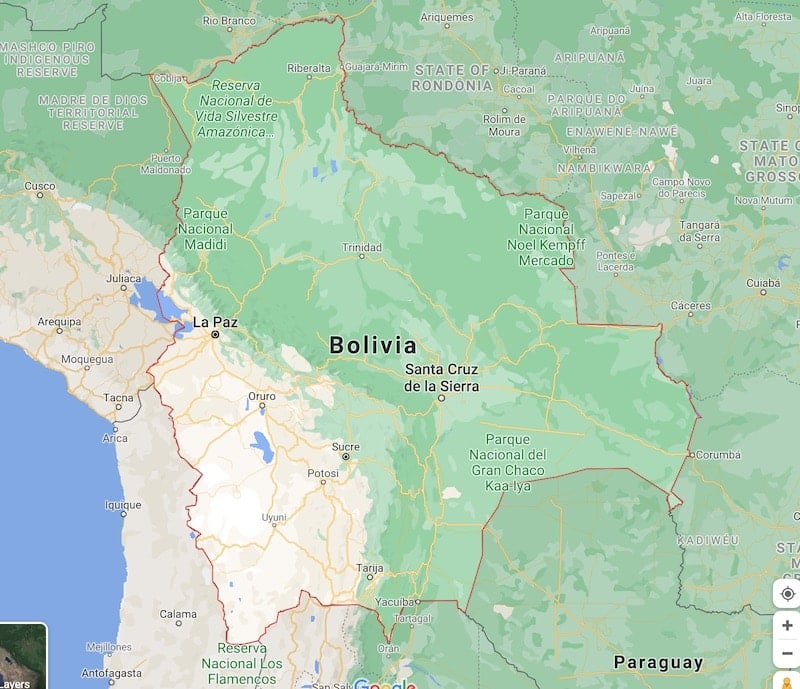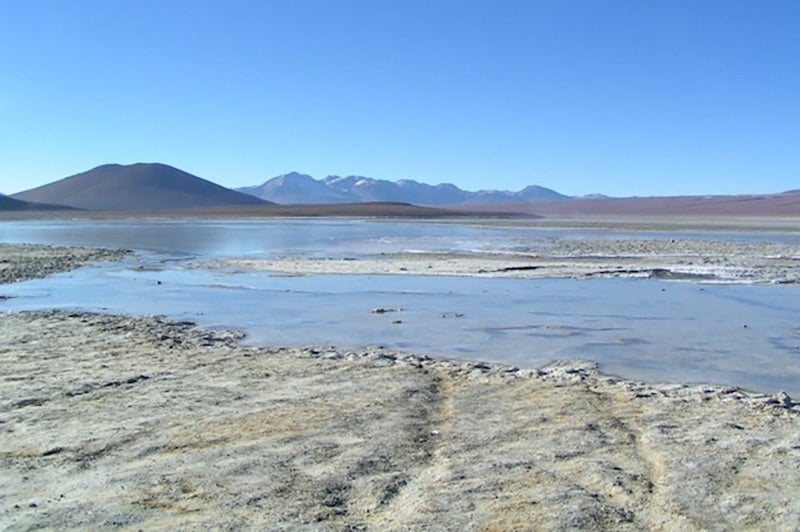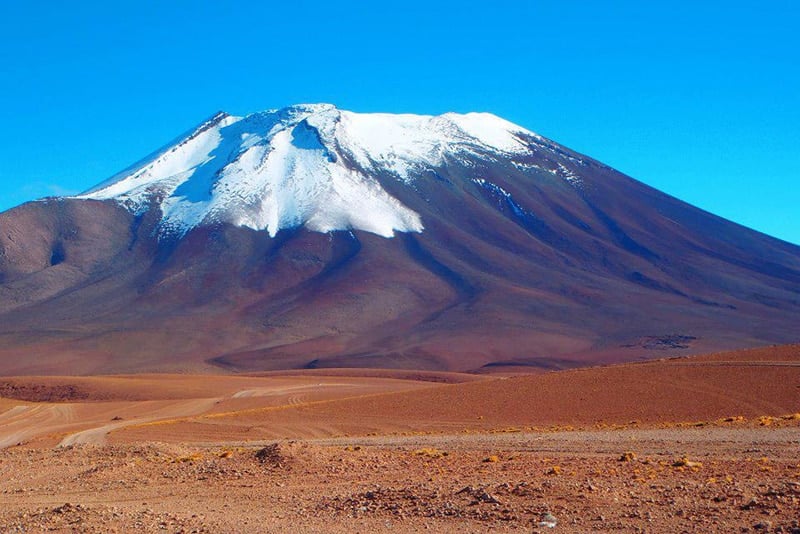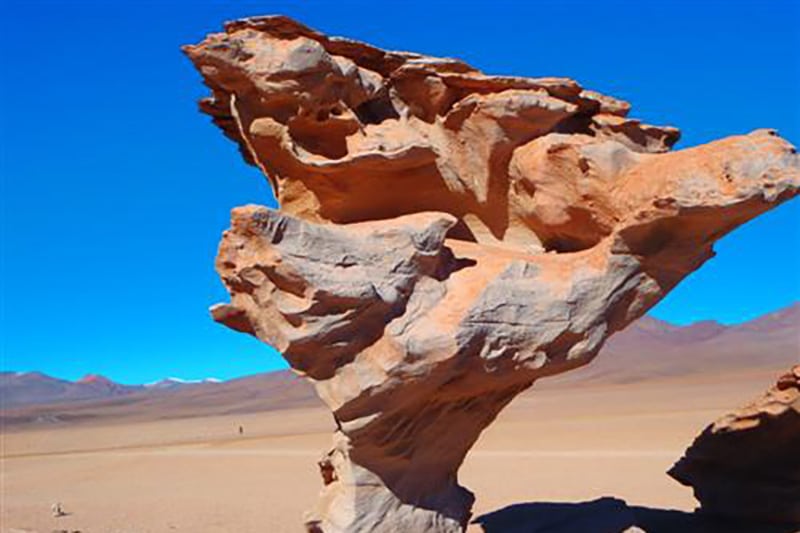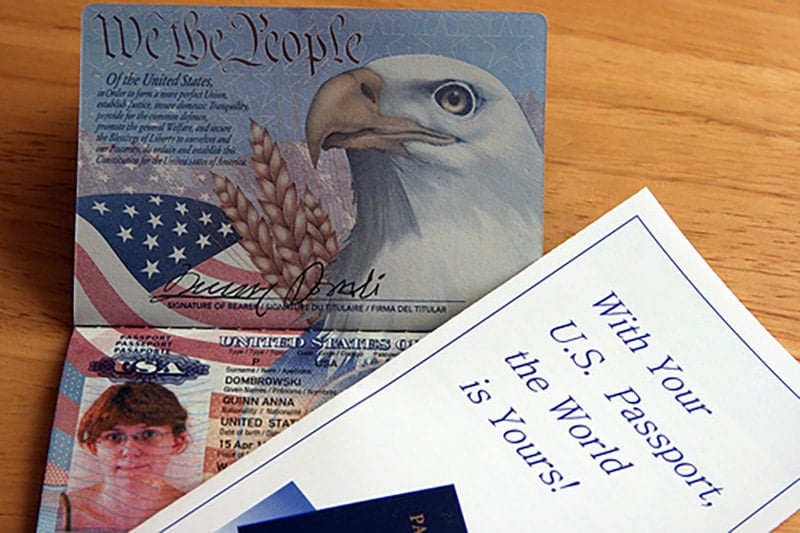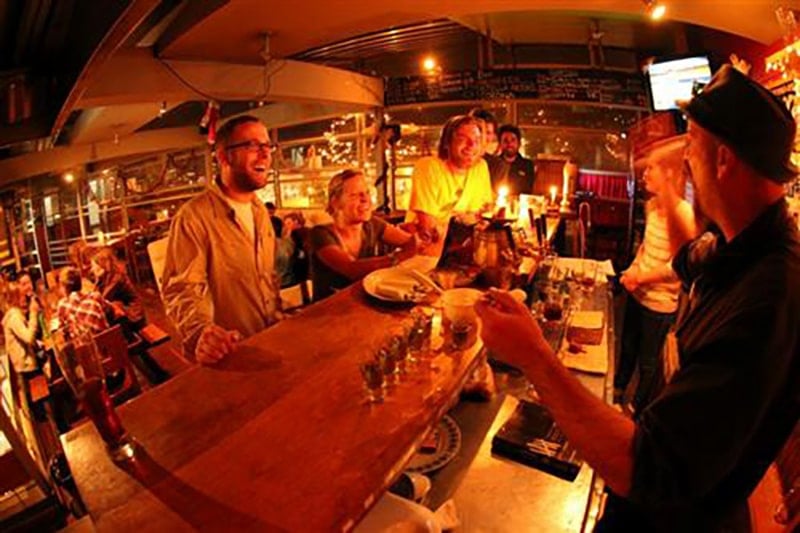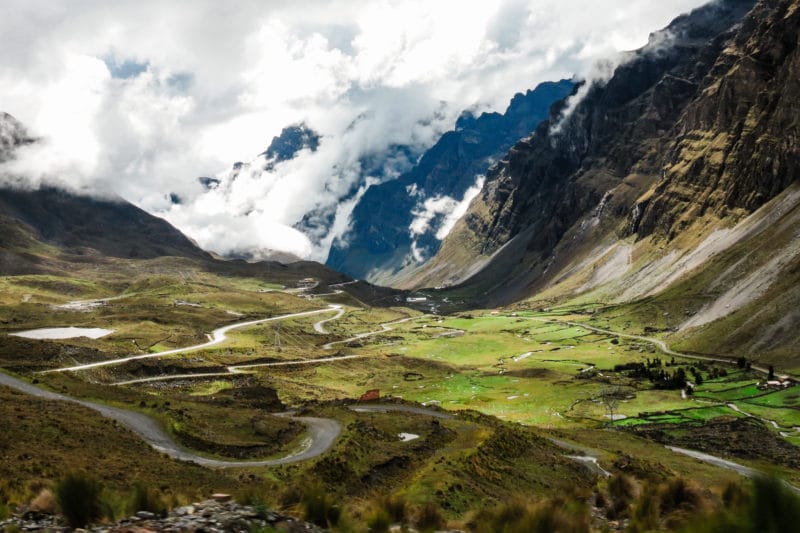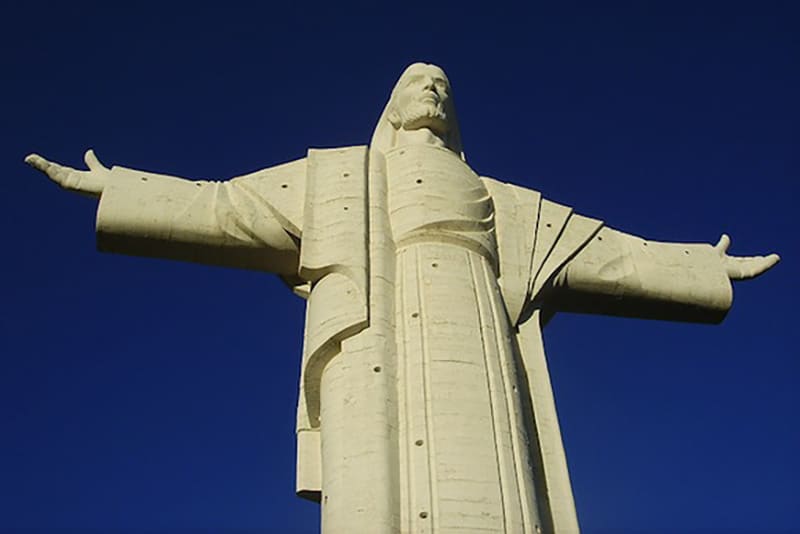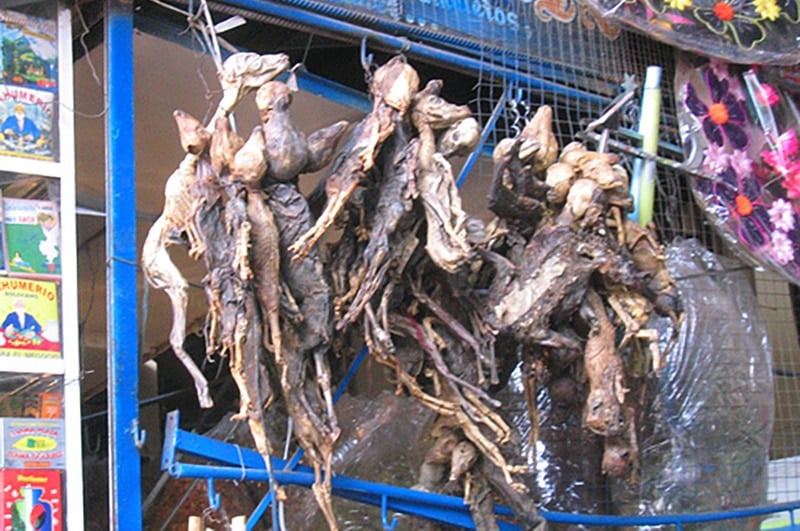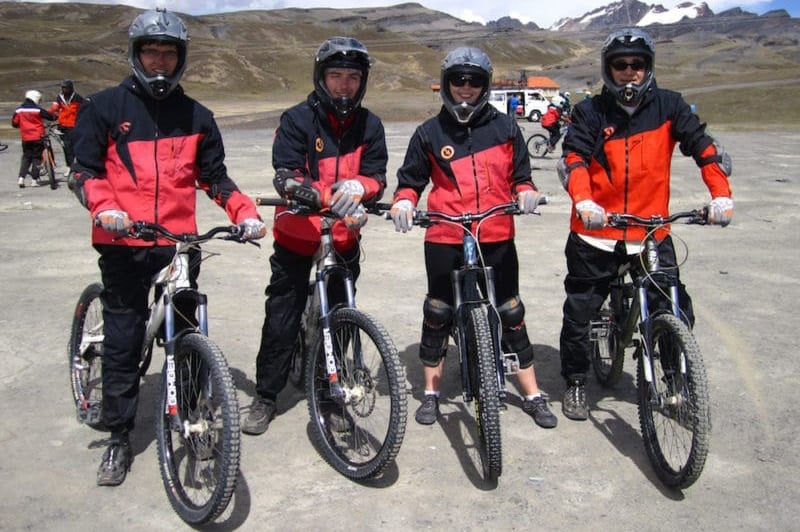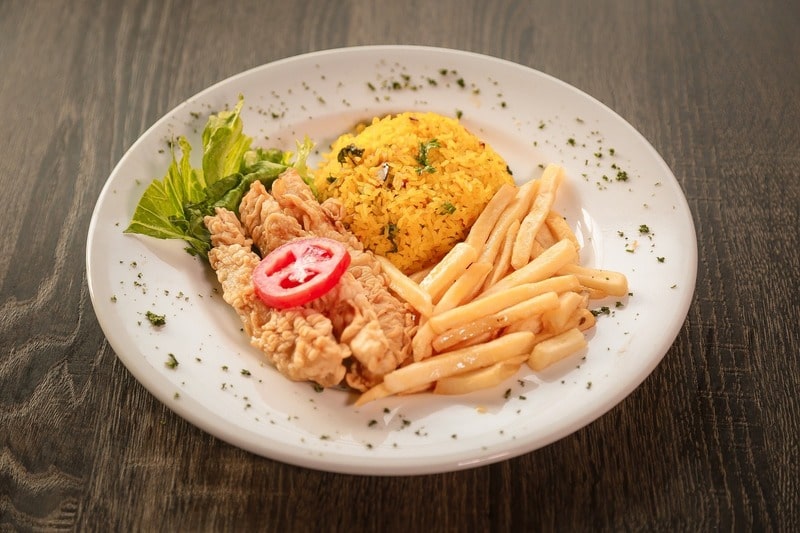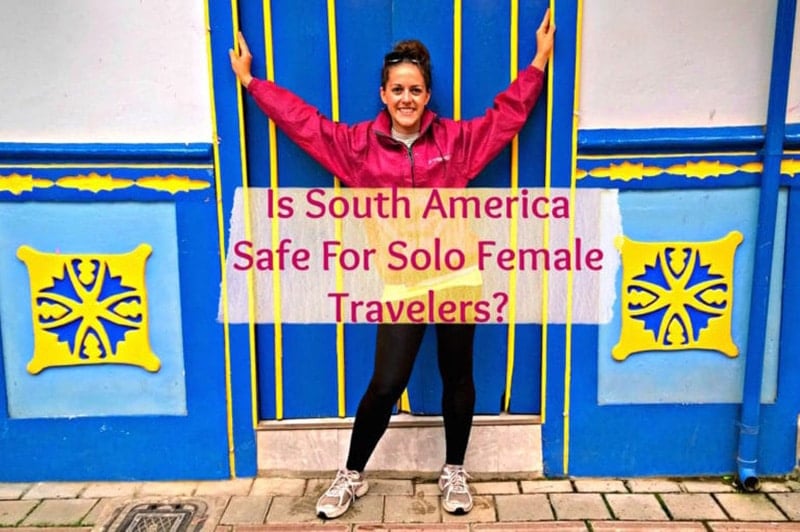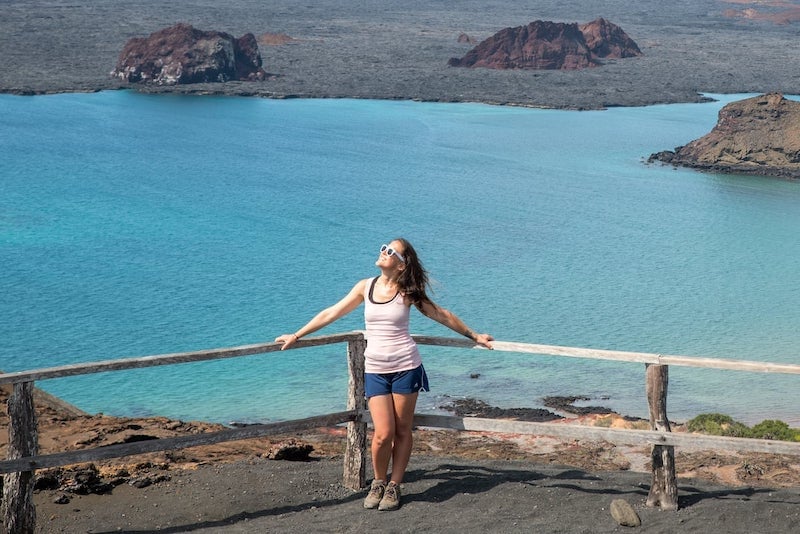Bolivia Travel Guide
Looking for an in-depth Bolivia travel guide?
Then you’re in the right place!
One of the more underrated gems of Latin America, Bolivia is a vibrant country full of incredible sights, friendly people and unique culture.
From breathtaking salt flats to lush jungles to exciting cities, there’s something for every kind of traveler in Bolivia. And if you’re looking to visit some record-breaking places, this is the country to visit.
Bolivia is home to the tallest monument to Jesus Christ on Earth, the world’s largest navigable lake, the largest population of Indigenous peoples, and much more.
With so many fascinating experiences, you’ll be bragging about your trip to your friends and family for weeks after you return.
Bolivia’s diverse landscape makes it the perfect destination for outdoor adventurers. From the Andes Mountains to the Amazon, there’s a lot to explore in this landlocked country.
Madidi National Park is the best place in the country to experience the mighty Amazon River, whether you’re hiking through the rainforest or checking out the local wildlife. Be sure to build in extra time to reach the park, though, as rides on public transport from major cities can take several hours, especially in the wet season.
Up in the highlands, you’ll find incredible mountain views at Lake Titicaca, a top spot for international travel. This giant lake is home to sights and experiences you won’t soon forget.
Wherever you decide to go, read up on travel health before your trip. Altitude sickness can take its toll here, so make sure you’re prepared for whatever adventure you have planned.
Not much of an outdoorsy type? Bolivia’s cities have tons to offer travelers.
Santa Cruz, located in southern central Bolivia, is considered the country’s commercial center and has tons of great museums, galleries, and cultural institutions to visit — as well as a vibrant nightlife scene.
In La Paz, you can browse the colorful markets and learn more about the Indigenous Incan culture that has endured in the area for centuries.
And in Sucre, you can see real dinosaur footprints and chow down on authentic empanadas all in the same day (a perfect itinerary if you ask us).
Ready to travel Bolivia?
Keep reading to dive into resources that will help you with planning a trip to Bolivia in South America.
Note: This ultimate guide to Bolivia travel contains affiliate links to trusted partners!
- Bolivia Map
- Bolivia Salt Flats Experiences
- La Paz Travel Guide
- Bolivia Travel Tips
- Things To Do In Bolivia
- Traveling In South America
- Best Bolivia Tours
- Bolivia Hotels
- Renting A Car In Bolivia
- Bolivia Travel Insurance
- Bolivia Travel Guide FAQ
- Q: What are the best places to visit in Bolivia?
- Q: Is Bolivia expensive for tourists?
- Q: What is the best way to travel around Bolivia?
- Q: Is Bolivia safe for travel?
- Q: What do I need to know before going to Bolivia?
- Q: How many days should you spend in Bolivia?
- Q: What is the best month to visit Bolivia?
- Q: Do I need a Bolivia travel visa?
- Q: Where is Bolivia?
- Q: Are credit cards accepted in Bolivia?
- Q: Can you drink the tap water in Bolivia?
- Q: What is the local currency in Bolivia?
- What would you add to this Bolivia travel guide?
Bolivia Map
Use this Bolivia travel map to begin planning your trip to this incredible country!
Click here for an interactive Google Map version of the above graphic.
Bolivia Salt Flats Experiences
Looking to travel to the Bolivia Salt Flats (ie Salar de Uyuni)? These guides can help!
La Paz Travel Guide
La Paz is a must-stop when traveling in Bolivia!
Bolivia Travel Tips
This advice can help you with planning a trip to Bolivia!
Things To Do In Bolivia
Book the following Bolivia tourist attractions & experiences for an incredible trip!
Traveling In South America
These guides share Bolivia travel advice as well as tips for exploring South America in general!
Best Bolivia Tours
Explore local culture with a Bolivia tour guide through these unique excursions:
- 3-Day Tour to Salt Flats and Lagoons from Uyuni
- La Paz City Walking Tour Including Historical Streets
- Chacaltaya + Moon Valley from El Alto
- Death Road: Mountain Bike Tour on the World’s Most Dangerous Road from La Paz
- Climbing Huayna Potosí from La Paz
- Day Tour to Titicaca Lake from La Paz
Bolivia Hotels
Click here to browse the best Bolivia travel hotels!
Prefer self-contained stays?
Click here to check out unique local rentals!
You can also use this map to search for local stays:
Renting A Car In Bolivia
Need a rental car for your Bolivia trip?
Use Discover Cars to quickly compare your car rental options.
Their comparison tool does the homework for you, so there’s no need to have up 10+ tabs trying to figure out which company is the most affordable. Actually, you can save up to 70% using their tool!
Bolivia Travel Insurance
It doesn’t matter if you’re traveling solo or with a group on a Bolivia tour. When visiting Bolivia — or any other country in the world — make sure to get travel insurance to protect your health and safety.
In my opinion, the best travel medical insurance for travelers is SafetyWing as they’ve got a large network and offer both short-term and long-term coverage — including coverage if you’re traveling for months as well as limited coverage in your home country).
Additionally, SafetyWing is budget-friendly and offers $250,000 worth of coverage with just one low overall deductible of $250.
With coverage, you’ll have peace of mind as you embark on your Bolivia travel itinerary.
Click my referral link here to price out travel insurance for your trip in just a few clicks.
Bolivia Travel Guide FAQ
Below, find answers to frequently asked questions about traveling in Bolivia.
Q: What are the best places to visit in Bolivia?
Bolivia is an amazing place to get outside and enjoy the wonders of nature and see truly once-in-a-lifetime sights.
One of the country’s most popular attractions is Salar de Uyuni, the world’s largest salt flat. Stretching nearly 11,000 square kilometers (4,247 square miles), this former prehistoric lake will make you feel like you’ve stepped onto another planet, with reflective landscapes as far as the eye can see.
The salt flat offers plenty of unique experiences, like an overnight stay in a salt hotel or a relaxing dip in the local hot springs. This is definitely one stop you won’t want to miss.
Truly daring bikers will want to take a ride on Death Road, a 40-mile downhill road that winds through Bolivia’s mountains.
As the name suggests, this isn’t exactly an experience for first-time bikers, and even if you’re experienced you still might want to ride with a tour guide. But the views from the cliffs and the adrenaline rush from the ride have made this road famous for a reason.
For a somewhat more relaxed experience, head to the famous Lake Titicaca, the largest lake in South America. Here, you can enjoy incredible views, explore Incan ruins, and check out man-made floating islands.
Bolivia is also home to many vibrant cities that are definitely worth exploring. The nation’s capital, La Paz, is a gorgeous city nestled into the mountains with tons of amazing sights to see and culture to take in.
Take a cable car up to the city’s highest peaks for incredible views of La Paz and the surrounding mountains. Explore old colonial cobblestone streets and stroll by colorful houses that date back to the 16th century.
And the adventurous can check out the Witches Market stocked with everything you need to commune with the divine, or just manifest some good luck (including llama fetuses).
Beyond La Paz, the city of Sucre is the perfect place to check out Spanish colonial architecture and brush up on your language skills with fellow international travelers. The surrounding mountains and mild weather also make Sucre the perfect spot for hiking some of the world’s best trails.
For a look into Bolivia’s history, head to Potosi, home of the Cerro Rico silver mines. Once one of the most populous cities in the Americas, the city showcases gorgeous historic architecture that really tells the story of this country’s long history.
Q: Is Bolivia expensive for tourists?
Compared to other South American destinations, Bolivia is quite inexpensive for travelers. The average traveler spends about $42 USD per day in Bolivia on food, transportation, accommodations, activities, and other travel expenses.
You can generally find apartment rentals for less than $50 USD per night and hostels are easy to find, particularly in cities.
Food is also generally pretty inexpensive regardless of whether you’re eating at restaurant or from a street food vendor.
Q: What is the best way to travel around Bolivia?
Air travel is usually the quickest and most comfortable way to get around the country. Flights in Bolivia are pretty inexpensive and will help you get to out-of-the-way destinations without losing days to travel.
Buses are a popular (and inexpensive) mode of transportation in the country, but they can be uncomfortable and journeys can take much longer than advertised. If your plans are flexible (and you’re on a tight budget), this might be the best way to get around.
You can also book a direct route on a tourist-class bus for a bit more money for a quicker, more comfortable ride.
Q: Is Bolivia safe for travel?
Bolivia is relatively safe for travelers but does pose some more risks than other destinations. Violent crime rates have risen here in recent years and petty crime is a constant issue.
Pickpocketing and bag snatching does happen, particularly in cities and more tourist-heavy areas. Always stay aware of your surroundings and don’t flaunt any obvious signs of wealth when you’re out in public to avoid pickpockets.
You’ll also want to keep your valuables hidden and separate your money so it’s not all in one place.
Bolivia is also a bit riskier for solo female travelers, but you should be fine if you stay on the backpacker route and avoid going out alone after dark.
Q: What do I need to know before going to Bolivia?
Bolivia’s landscape is very diverse, which means that the weather can vary from place to place. The high altitudes of mountain destinations can leave you shivering in the cold if you’re not prepared, while you may find yourself facing high temperatures in the lowland regions.
If you’re doing a big tour of the country and visiting several different destinations, pack accordingly. Do some research on each place you plan to visit and make sure you’re prepared with appropriate clothing.
Also, the sun is also strong wherever you go in Bolivia, so don’t forget the SPF!
If you’re not used to high altitudes, you may find yourself feeling a little woozy once you enter the highlands. If you’re facing altitude sickness, the best thing to do is to take care of yourself as best you can. Rest when you need to, drink lots of water, limit your alcohol intake, and ascend slowly if you can.
You might also want to pack appropriate medications in case you experience symptoms. Ibuprofen is always great for headaches and acetazolamide and dexamethasone can help with more specific altitude sickness symptoms. Be sure to ask your doctor if these medications are appropriate for you before your trip.
Most businesses in Bolivia don’t accept credit cards, so you’ll want to make sure you have cash on hand. Better yet, keep some spare cash in your luggage — you’ll find ATMs in most towns here but they’re not always reliable. It’s always helpful to have a backup stash in a safe place just in case you can’t access your funds.
Q: How many days should you spend in Bolivia?
Most experts suggest spending about a week in Bolivia. This should give you enough time to see the major sights like Salar de Uyuni, Lake Titicaca, and La Paz and will give you enough wiggle room to travel from destination to destination.
On a 10-day trip, you can build in some time to visit other great destinations like Sucre and Tupiza.
Q: What is the best month to visit Bolivia?
Bolivia’s climate varies throughout the country, but you’ll find that the dry season (April through October) is usually the best time to visit. Temperatures are a bit cooler but without the extreme weather of the wet season, traveling around the country is much easier.
The country’s peak season runs from June through September so plan to visit during a different time if you want to avoid the crowds.
Q: Do I need a Bolivia travel visa?
Visitors from the United States do need a visa to visit Bolivia. U.S. citizens can obtain a tourist visa for free prior to their trip from their local Bolivian Embassy or Consulate or purchase a visa at the border.
Visitors with a visa can stay in the country for up to 30 days per trip, not to exceed 90 days per year. To obtain a visa, visitors must show proof of a round-trip ticket and lodging in Bolivia (i.e. a hotel reservation or, if you’re staying with family or friends, a letter of invitation). Visitors also must show an International Certificate of Yellow Fever Vaccination.
Travelers from Canada, the United Kingdom, the European Union, and Australia do not need a visa to enter Bolivia.
It’s recommended to view your country’s Bolivia International Travel Information page for the most up-to-date information on entry and exit rules and Bolivia Travel Requirements. You can also contact the Consulate General of Bolivia.
Q: Where is Bolivia?
Bolivia is located in west-central South America. It shares borders with Brazil (north and east), Paraguay (southeast), Argentina (south), Chile (southwest and west), and Peru (northwest).
Q: Are credit cards accepted in Bolivia?
Credit cards — particularly Visa and Mastercard — are typically accepted at larger establishments in Bolivia, though it is always wise to carry some cash for smaller establishments and in case of emergency.
Q: Can you drink the tap water in Bolivia?
The tap water is typically not safe to drink in Bolivia. Luckily, it is easy to find bottled water throughout the country. Or, better yet, you can bring a filtration bottle to limit your plastic usage.
Q: What is the local currency in Bolivia?
The local currency in Bolivia is the Bolivian boliviano (BOB).
What would you add to this Bolivia travel guide?
Enjoyed this ultimate Bolivia travel guide? Pin it for later!


